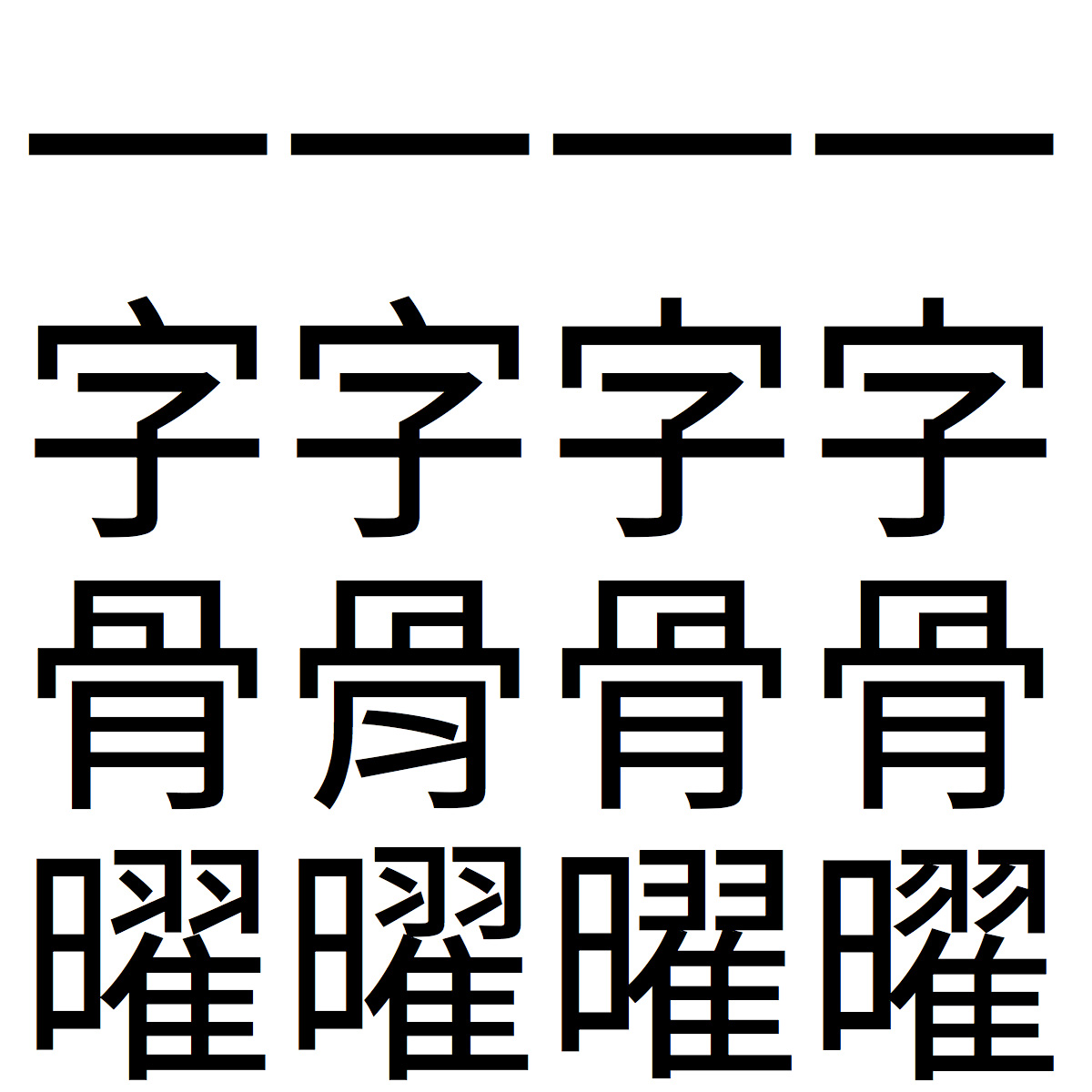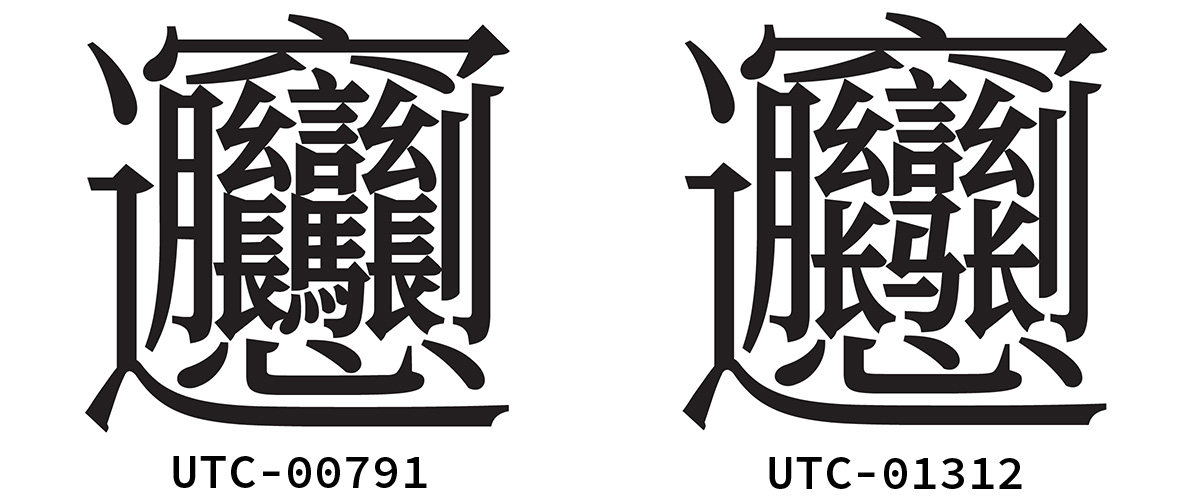
(The introductory graphic illustrates how the character 剣 (U+5263) is displayed using the fonts that are introduced in this article. The code point for this character maps to a glyph that displays as “63” in the FDArray Test 257 font, which is the hexadecimal equivalent of the decimal index of the FDArray element to which its glyph is assigned, which is 99. Likewise, the code point for this character maps to a glyph that displays as “52” in the FDArray Test 65535 font, which is the hexadecimal equivalent of the decimal index of the FDArray element to which its glyph is assigned, which is 82.)
I have built several CID-keyed OpenType/CFF fonts that are specifically designed to test various limits, by exercising various implementation limits, such as the number of glyphs (65,535 is the architectural limit), the number of FDArray elements (256 is the architectural limit), and the number of mappings in the ‘cmap‘ table (when the surrogates and non-characters are factored out, Unicode has 1,111,998 possible mappings in its 17 planes). I have sometimes made these fonts available, such as in this May of 2012 article that explains how such fonts can be built.
Anyway, I spent pretty much all day yesterday—except for a somewhat longer than usual lunch break that was actually used to watch The Martian (2015) with my wife—preparing a pair of open source CID-keyed OpenType/CFF fonts that exercise these limits but to different degrees, and I also managed to prepare and release the project on GitHub as FDArray Test.
Continue reading…











